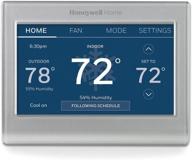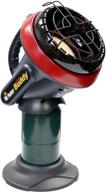
Review on 📡 Genie GSTB-R STB-BL Safety Beams Replacement, 2 Pack, Black, one size (GSTB-R) by Imed Artun

DIY Guides/Help
First of all, this garage door opener security T-bar replacement kit has worked great for me. I have a 20 year old Genie Intellicode garage door opener that was here when we bought the house and the garage door opener has worked flawlessly for 20 years. However, over the course of twenty years there have been intermittent problems with the standard sensors that likely came with the garage door opener. From time to time, the standard rectangular sensors would become misaligned, resulting in the garage door not closing. Also, one of the indicators on one of the sensors never worked, making it difficult to align the infrared beam. I have a single 16 foot insulated garage door so a garage door opener is a must, especially for my wife. Over the last month the sensors seemed to fail and at least 5 times I had to adjust the angle of the sensors to close the garage door. I decided it was time to fix this issue. I was evaluating a similar pair of Genie brand sensors at a local lumberyard and they wanted a little over $40 for a sensor replacement kit. To be fair, lumberyard - I think their kit included new wires that this kit doesn't. Since my garage door sensors were already working, I saw no need to rewire the sensor. I believe this will be the case for most of you if you are having problems with the Genie garage door opener sensors. This is how you can determine if you need this job. If you prefer to call a professional to make this replacement, expect to pay approximately $125.00 including parts, travel and service charges. I know because I called one. He explained that if he had to rewire the sensors I would assume he would add another $50. He suggested replacing the wiring. Tools you'll need: 1.) Standard flathead screwdriver (for prying old sensors so wiring can be removed) 2.) Small Phillips screwdriver (for attaching wiring to new sensors) 3.) Decent battery-powered screwdriver for driving screws that may come in with new sensors. (You'll need a ratcheting screwdriver for your screwdriver so you can use 1/4" drive nuts). Instead, I used Phillips drywall screws. 110v wire that powers the garage door opener Installation 1.) First --- DISCONNECT ----the garage door opener.Removing and reinstalling new sensors may short out the small computer circuit board of the garage door opener.In this case, you will have to buy a new circuit board or replace the garage door opener entirely.Suddenly, your small do-it-yourself project just got a lot more expensive - if you don't follow this simple basic instruction you will act on your own 2.) Unscrew the existing screws holding the old sensors (bracket and all) one at a time with the battery screwdriver, take a flat head screwdriver and pry off the old black disassembled sensor Mine were in the style of an old plastic rectangular box - they had There was a slot I could insert a flathead screwdriver into and with a slight twist they came apart easily. After disconnecting, 2 wires were inserted into the connection with the lock. All I had to do was slide the little green tab on top of the slip connector and the wire fell out of the connector. 3.) Feed the wires you just removed from the old sensors through the holes in the new sensor's lever (bracket) so that the wires are held in the new sensor. Then use a small Phillips screwdriver to attach the wiring to the screws on the back of the new sensor. (It doesn't matter which wire goes to which terminal.) Mounting points on new sensors have a square metal grommet behind the Phillips screws - be careful to place the exposed wire between the grommet and not just around the screws. 4.) The instructions that came with the new sensors are to install the new sensors 5 to 6 inches off the garage floor. The floor in my garage is uneven, but this has prevented any measuring and leveling problems. Did my old garage door sensors work properly? I was able to use one of the old screw holes to mount the sensor at the same height as the old sensor. Do not install any additional screws at this point - only one screw will hold each sensor well enough to check alignment. If you need to rotate the sensor a bit, it's easier to do by just installing one screw. 5.) Mount the other sensor as above - attach the wires and attach the bracket arm to the wall or post with just one screw on top. the most present screw hole if you did that with the other side sensor. 6.) With both sensors connected and all four wires connected to their respective sockets, reconnect the garage door opener. Make sure one sensor has a solid red light and the other has a solid green light. If you're as lucky as me, both lights will come on and you can now test opening and closing the garage door. If not - and the indicators are flashing, it means that the beam is misaligned. Look at each sensor and check the angle of each - the light opening that emits the beam should be perpendicular to the garage floor. If it is not square, rotate the sensor bracket slightly. You know you've hit the spot when the lights on both sensors are lit. Check the garage door again for opening and closing. Also, make sure you can stop the door closing by breaking the beam with your foot or another hard object. Do not stand in the way of the garage door until you have verified that the security sensors are working properly. Added screws. Well done. Disclaimer: This information is provided as an aid to anyone attempting to replace their existing Genie garage door closer sensors. Your successful installation may vary. I take no responsibility that this information is complete or correct. Perform this repair at your own risk.
- Pleasant
- Obsolete Model
New products
Comments (0)
Top products in 🧱 Building Materials

IKSTAR EVA Thermal Plastic Door Cover 38" X 82": Insulated Magnetic Curtain Keeps Cool Summer, Warm Winter For AC Room, Kitchen & Stair - Brown

40 Review

Stylish & Safe: Sussexhome Carpet Stair Treads For Wooden Steps - 4-Pack Of Self-Adhesive, Pet & Kid-Friendly Indoor Treads To Prevent Slipping

51 Review

Protective And Stylish: XCEL 4Ft W X 5Ft H Black Steel Fence Gate With Anti-Rust Technology And Sharp End Pickets For Effortless Installation And Durable Outdoor Use

34 Review

Non-Slip Brown Carpet Stair Treads - 15-Pack Of 8"X30" Runners For Wooden Steps

39 Review
Another interesting products

Honeywell Home RTH9585WF1004 Wi-Fi Smart Color Thermostat: 7 Day Programmable, Energy Star, Alexa Ready

2 Review

Mr Heater F215100 3800 BTU Propane

6 Review

🏠 Programmable Smart Thermostat for Home - 3rd Generation Nest Thermostat - Works with Alexa - Stainless Steel - Google Nest Learning Thermostat

7 Review

🥶 Frost King HD7 Premium Unbreakable Air Deflector: Top Quality 2 Piece Set

9 Review

